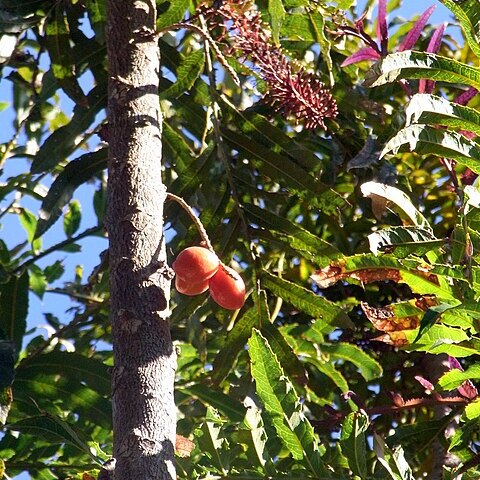An evergreen tree. It grows 2-7 m high and spreads 1.5-4 m wide. It has many stems. The bark is light brown and wrinkled. It is corky. The leaves are up to 1 m long. The leaves are deeply divided. There are 10-35 lobes. They are leathery. The leaflets are unevenly toothed and have prickles. The flowers are in purple spikes. These occur on the old wood. The fruit is 5 cm across. They are blue to bright red and fleshy. They contain an edible pink kernel.

